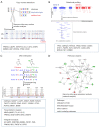Systemic treatment of penile squamous cell carcinoma-hurdles and hopes of preclinical models and clinical regimens: a narrative review
- PMID: 34804850
- PMCID: PMC8575571
- DOI: 10.21037/tau-20-945
Systemic treatment of penile squamous cell carcinoma-hurdles and hopes of preclinical models and clinical regimens: a narrative review
Abstract
Despite contemporary research efforts, the prognosis of penile squamous cell carcinoma (PeSCC) has not significantly improved over the past decade. Despite frequently encountered patient-related delayed medical consultations impairing outcomes, several other aspects contribute to the lack of advancement in the treatment of this condition. One essential reason is that translational research, a prerequisite for the clinically successful disease management, is still at an early stage in PeSCC as compared to many other malignancies. Preclinical experimental models are indispensable for the evaluation of tumor biology and identification of genomic alterations. However, since neither commercial PeSCC cell lines are available nor xenograft models sustainably established, such analyses are challenging in this field of research. In addition, systemic therapies are less effective and toxic without decisive breakthroughs over recent years. Current systemic management of PeSCC is based on protocols that have been investigated in small series of only up to 30 patients. Thus, there is an unmet medical need for new approaches necessitating research efforts to develop more efficacious systemic strategies. This review aims to highlight the current state of knowledge in the molecular alterations involved in the etiology and ensuing steps for cancer progression, existing preclinical models of translational research, clinically relevant systemic protocols, and ongoing clinical trials.
Keywords: Penile squamous cell carcinoma (PeSCC); copy number alterations (CNAs); mutational profiling; treatment, biomarkers.
2021 Translational Andrology and Urology. All rights reserved.
Conflict of interest statement
Conflicts of Interest: All authors have completed the ICMJE uniform disclosure form (available at http://dx.doi.org/10.21037/tau-20-945). The series “Management of Advanced Genitourinary Malignancies” was commissioned by the editorial office without any funding or sponsorship. Dr. PES reports other from NCCN Bladder and Penile Cancer Panel, other from Global Society of Rare GU Tumors, during the conduct of the study. The authors have no other conflicts of interest to declare.
Figures

Similar articles
-
Wnt Signaling in Male Genital Lichen Sclerosus, Differentiated Penile Intraepithelial Neoplasia, and Penile Squamous Cell Carcinoma.JID Innov. 2025 Apr 11;5(4):100372. doi: 10.1016/j.xjidi.2025.100372. eCollection 2025 Jul. JID Innov. 2025. PMID: 40486660 Free PMC article.
-
Superficial primary small cell carcinoma of the esophagus: clinicopathological and immunohistochemical analysis of 15 cases.Dis Esophagus. 2010 Feb;23(2):153-9. doi: 10.1111/j.1442-2050.2009.00981.x. Epub 2009 Jun 9. Dis Esophagus. 2010. PMID: 19515193
-
Tumor PD-L1 expression is correlated with increased TILs and poor prognosis in penile squamous cell carcinoma.Oncoimmunology. 2016 Dec 22;6(2):e1269047. doi: 10.1080/2162402X.2016.1269047. eCollection 2017. Oncoimmunology. 2016. PMID: 28344882 Free PMC article.
-
Testicular germ-cell tumours and penile squamous cell carcinoma: Appropriate management makes the difference.Eur J Surg Oncol. 2019 Jan;45(1):60-66. doi: 10.1016/j.ejso.2018.02.006. Epub 2018 Feb 14. Eur J Surg Oncol. 2019. PMID: 29526370 Review.
-
Management of Advanced Penile Cancer.Mayo Clin Proc. 2021 Mar;96(3):720-732. doi: 10.1016/j.mayocp.2020.06.031. Epub 2020 Dec 9. Mayo Clin Proc. 2021. PMID: 33308870 Review.
Cited by
-
Interplay Between Immune and Cancer-Associated Fibroblasts: A Path to Target Metalloproteinases in Penile Cancer.Front Oncol. 2022 Jul 19;12:935093. doi: 10.3389/fonc.2022.935093. eCollection 2022. Front Oncol. 2022. PMID: 35928876 Free PMC article.
-
Constructing a heparin-modified penile decellularized scaffold to improve re-endothelialization in organizational reconstruction.Transl Androl Urol. 2022 May;11(5):683-693. doi: 10.21037/tau-22-315. Transl Androl Urol. 2022. PMID: 35693720 Free PMC article.
-
Assessment of PI3K/mTOR/AKT Pathway Elements to Serve as Biomarkers and Therapeutic Targets in Penile Cancer.Cancers (Basel). 2021 May 12;13(10):2323. doi: 10.3390/cancers13102323. Cancers (Basel). 2021. PMID: 34066040 Free PMC article.
-
Comment on DKK1 inhibits canonical Wnt signaling in human papillomavirus-positive penile cancer cells.Transl Oncol. 2022 Feb;16:101326. doi: 10.1016/j.tranon.2021.101326. Epub 2021 Dec 30. Transl Oncol. 2022. PMID: 34974279 Free PMC article. No abstract available.
-
Value of c-MET and Associated Signaling Elements for Predicting Outcomes and Targeted Therapy in Penile Cancer.Cancers (Basel). 2022 Mar 25;14(7):1683. doi: 10.3390/cancers14071683. Cancers (Basel). 2022. PMID: 35406455 Free PMC article.
References
Publication types
LinkOut - more resources
Full Text Sources
Miscellaneous
